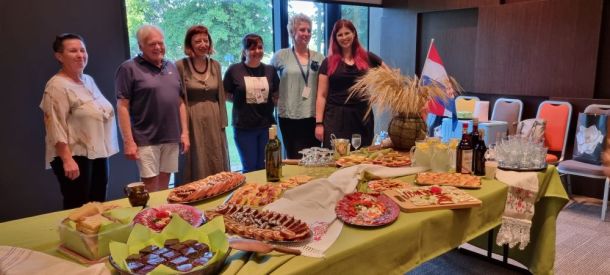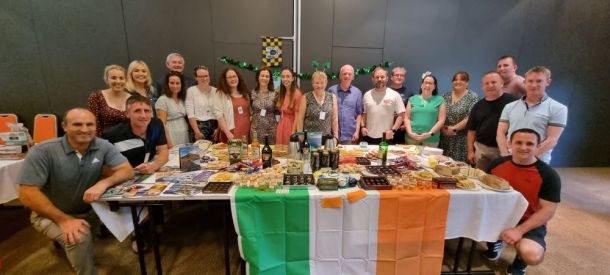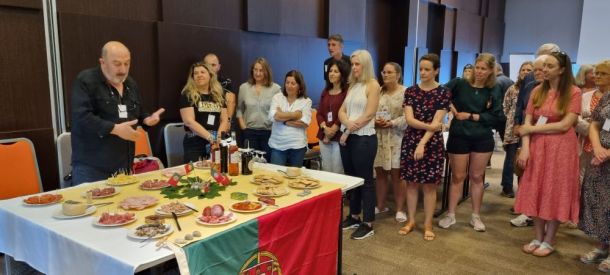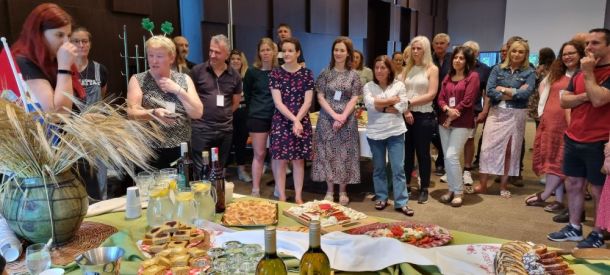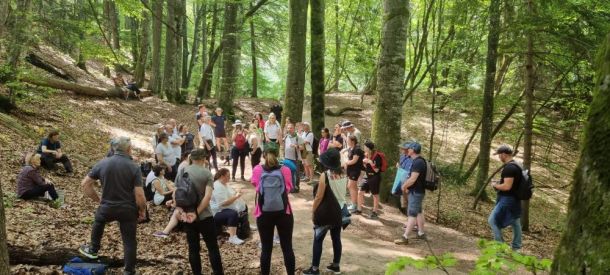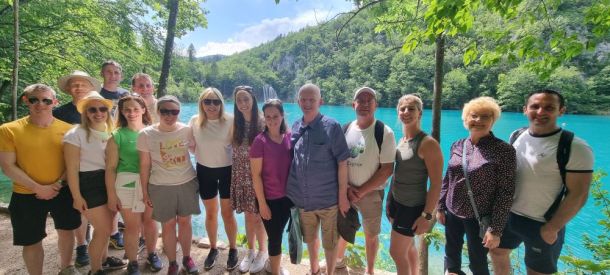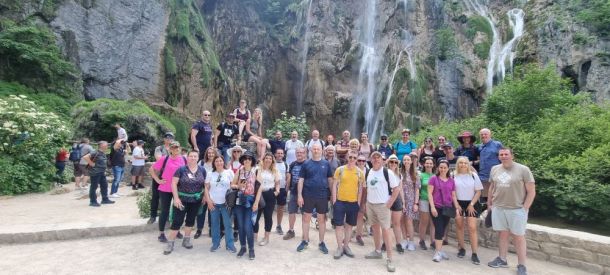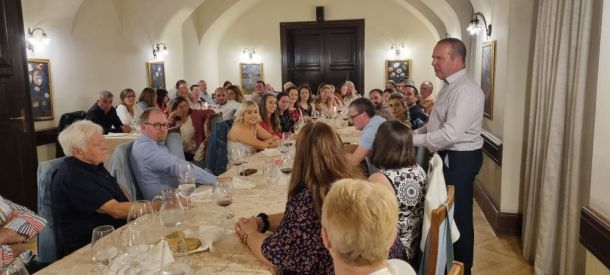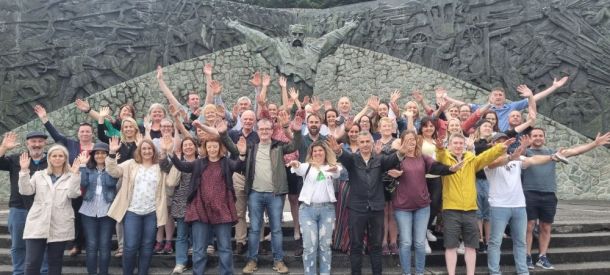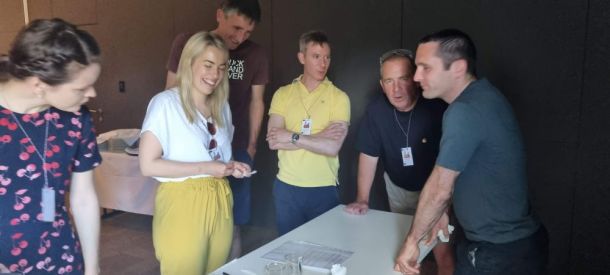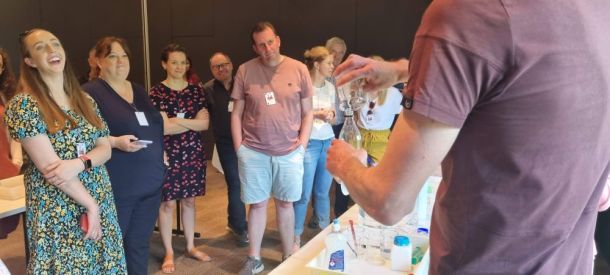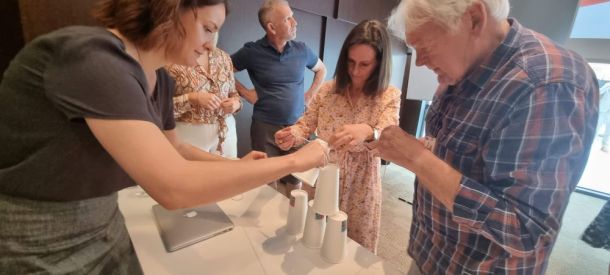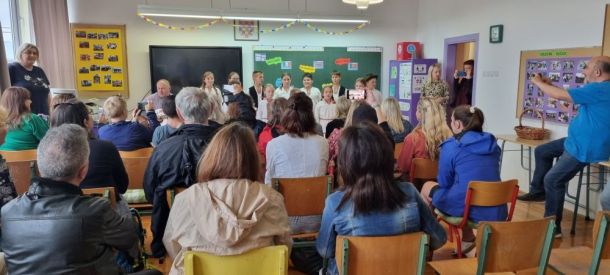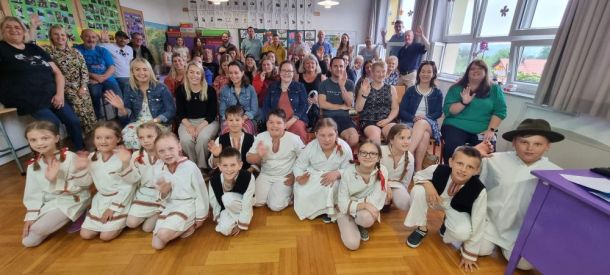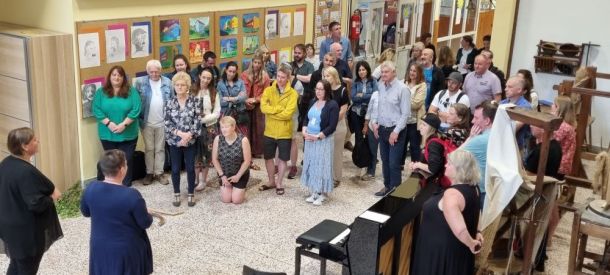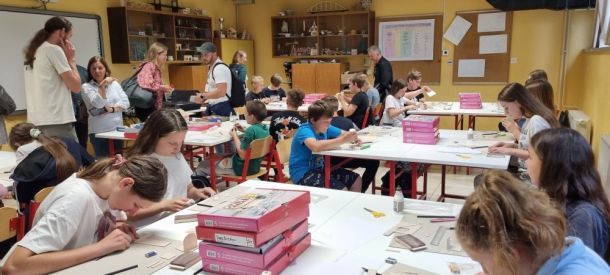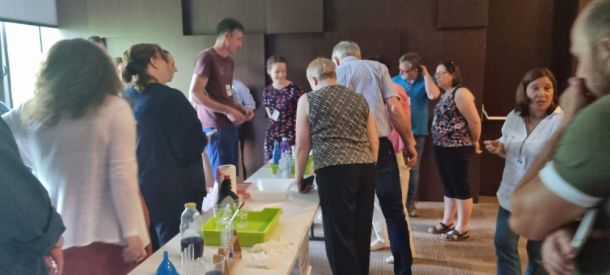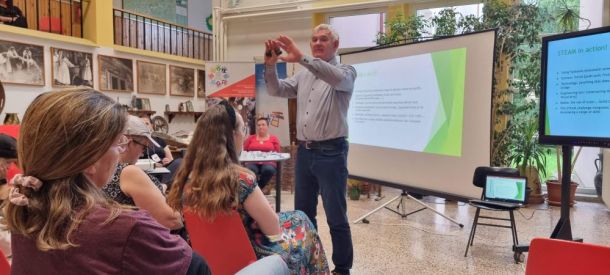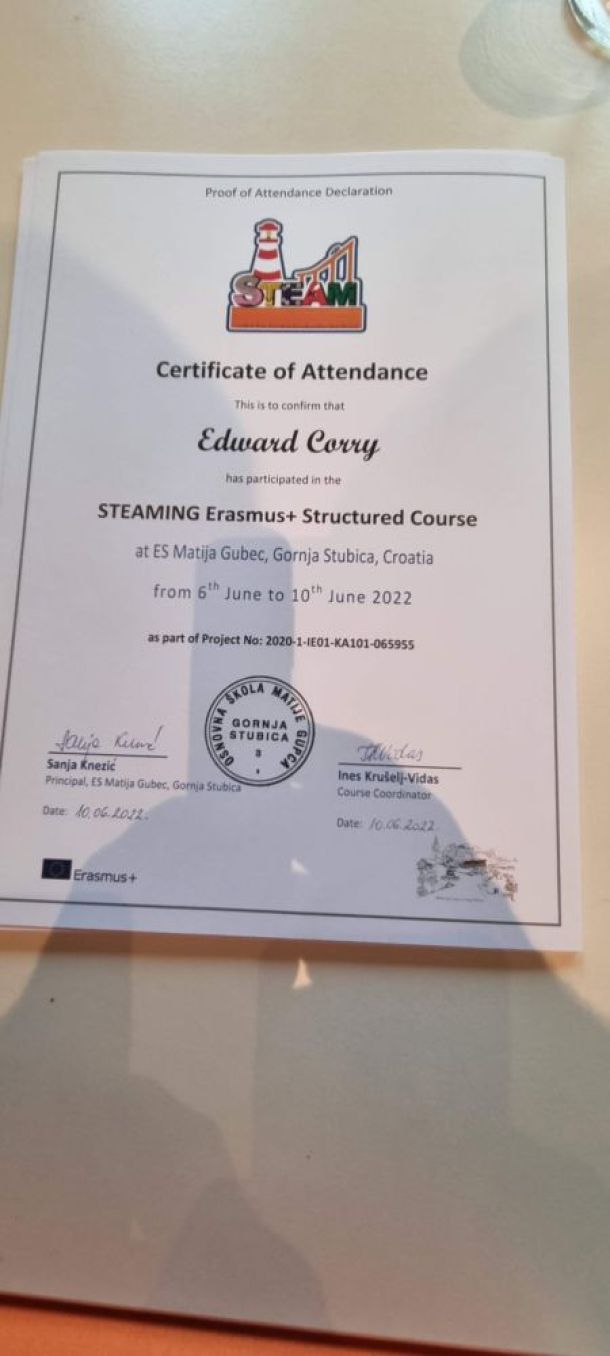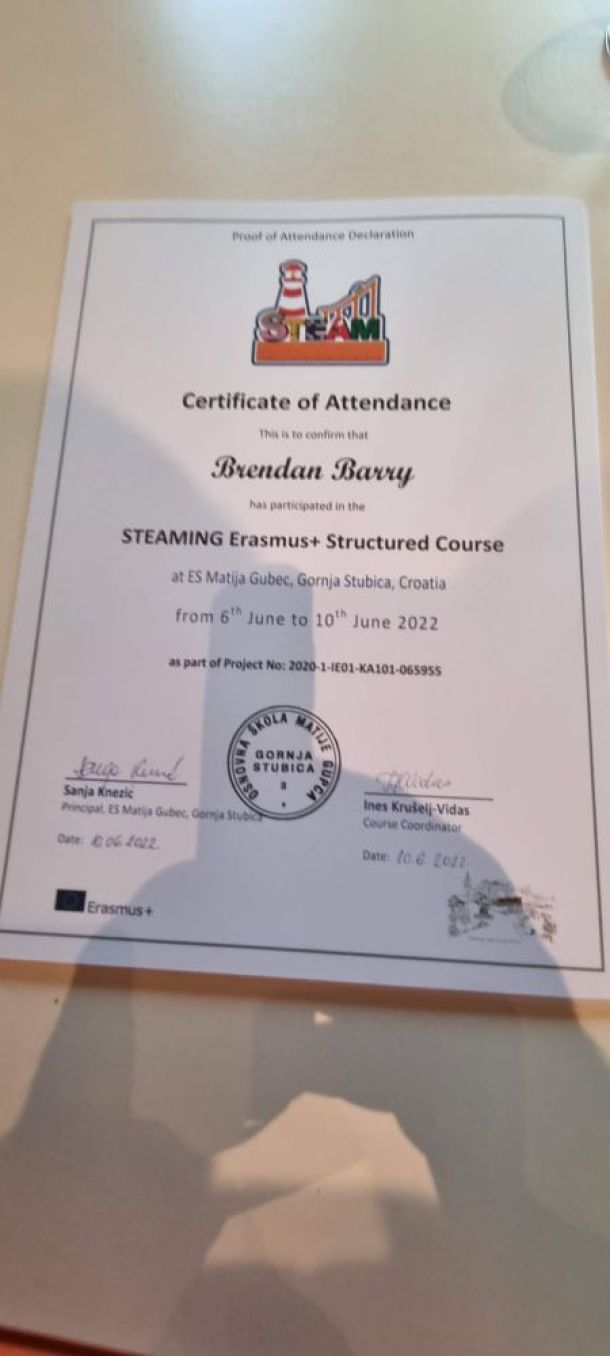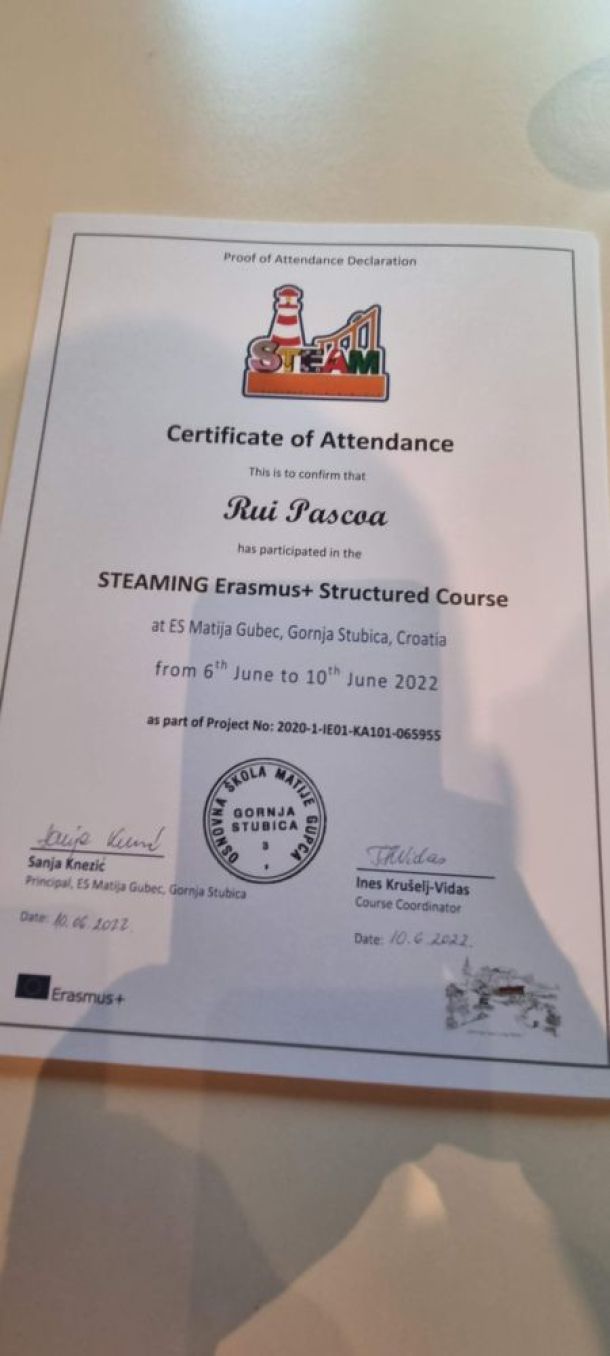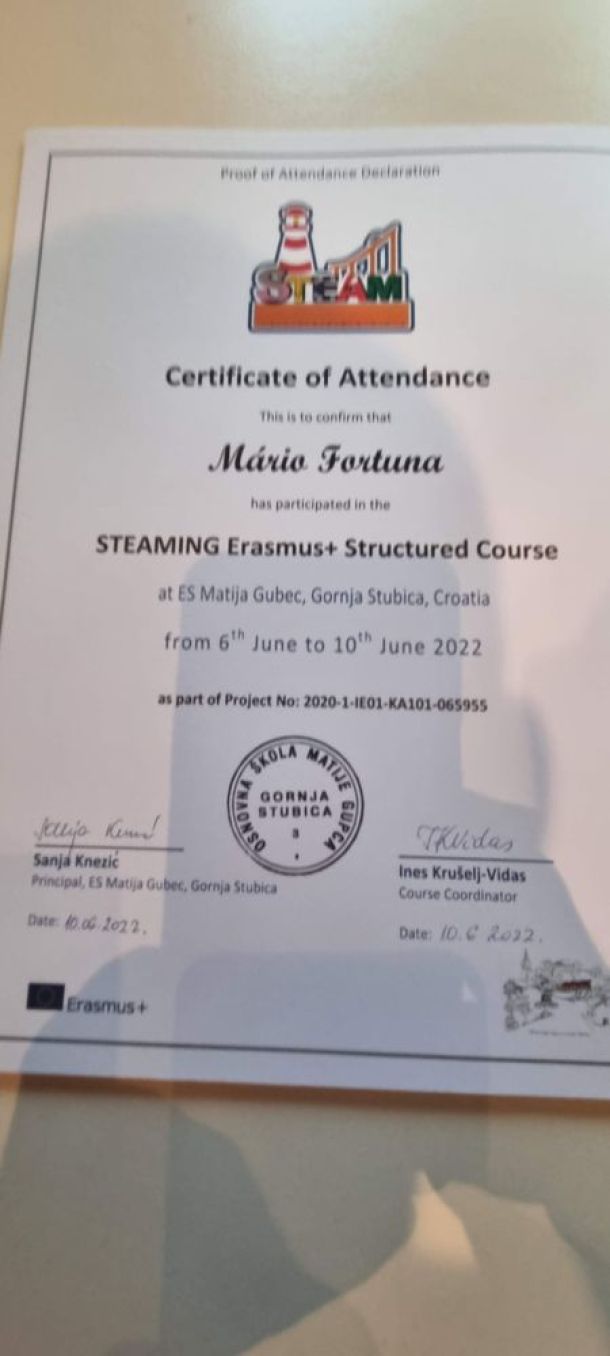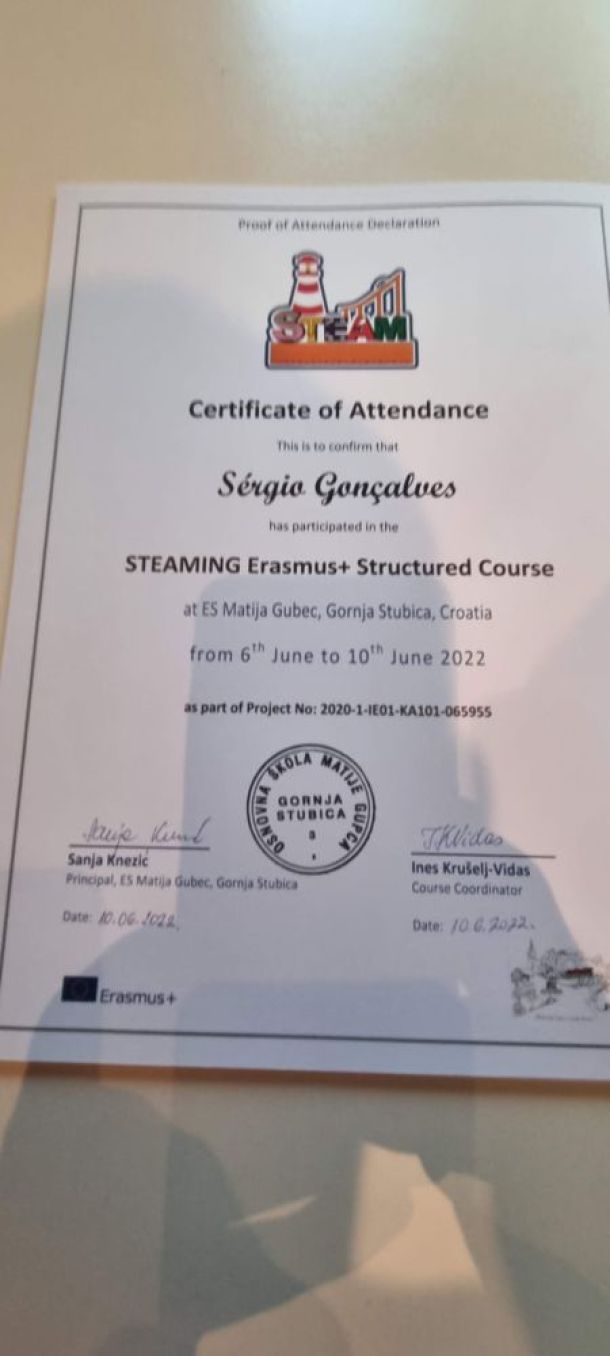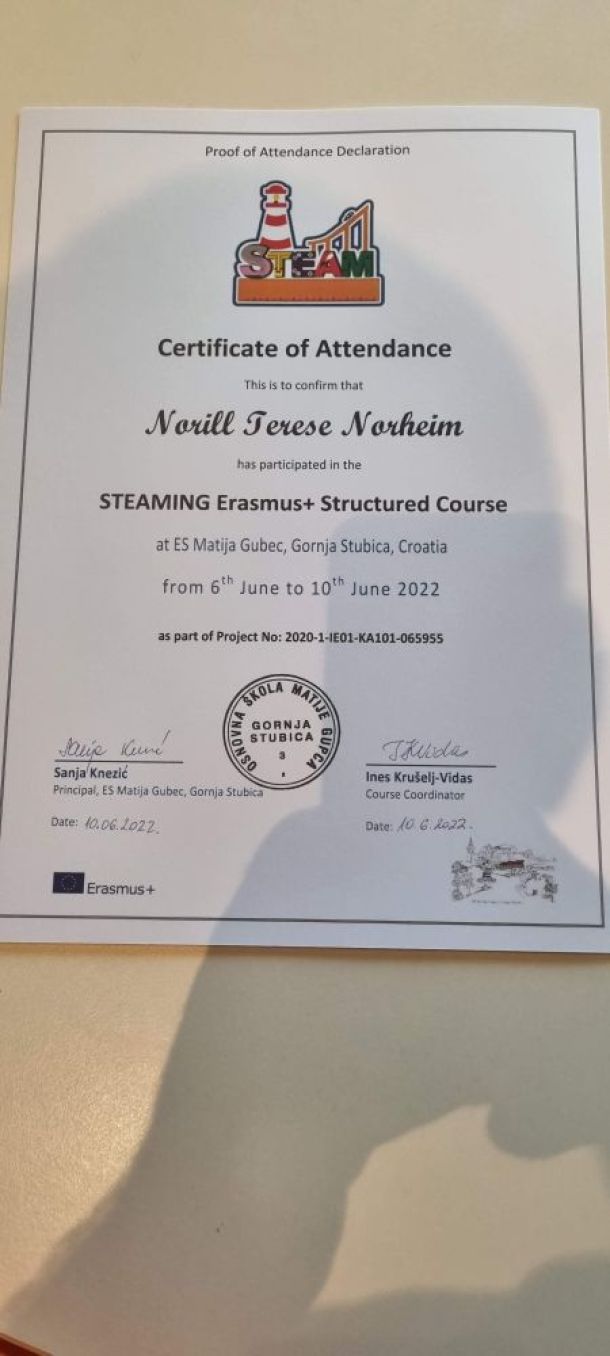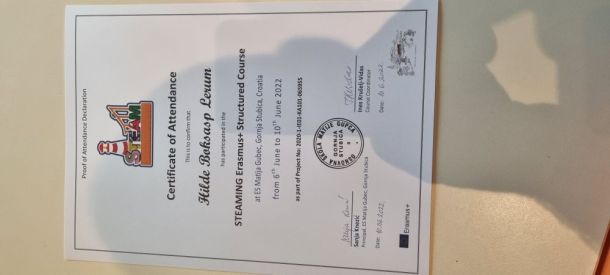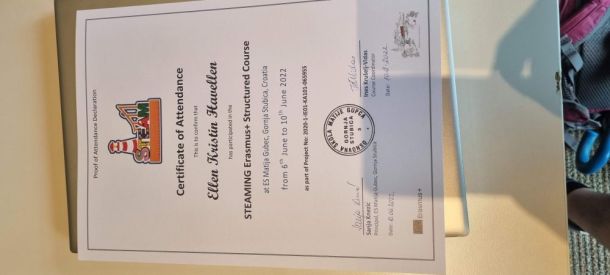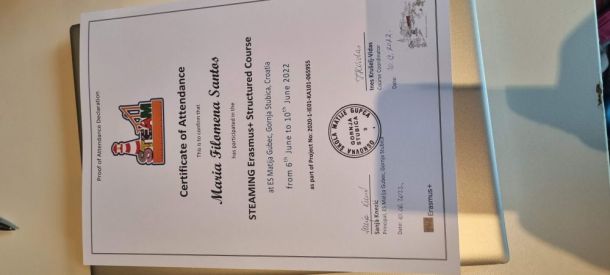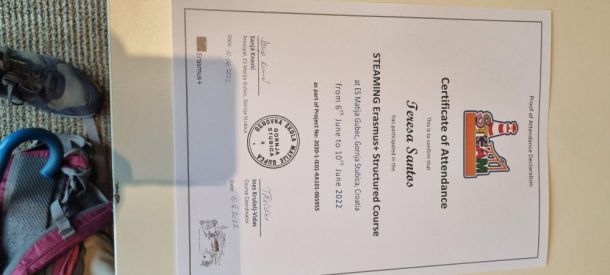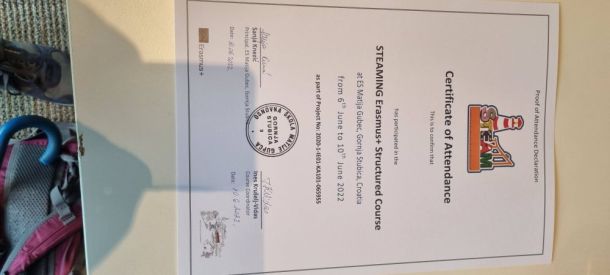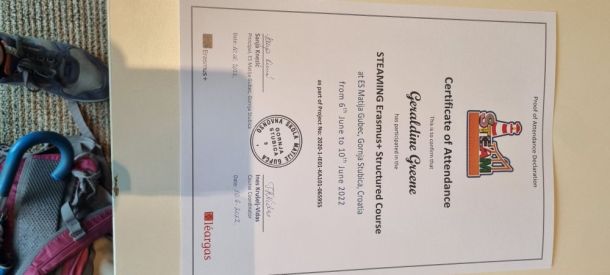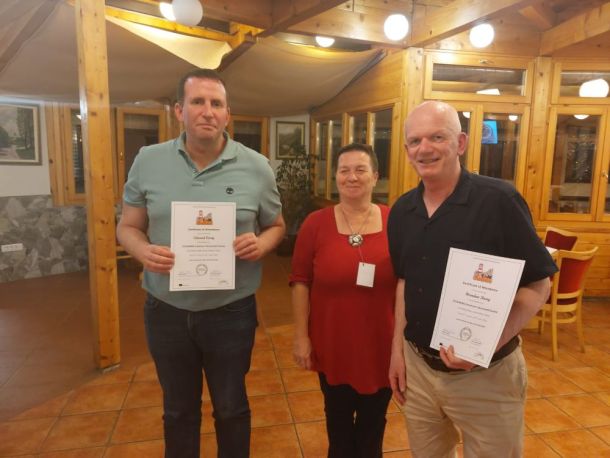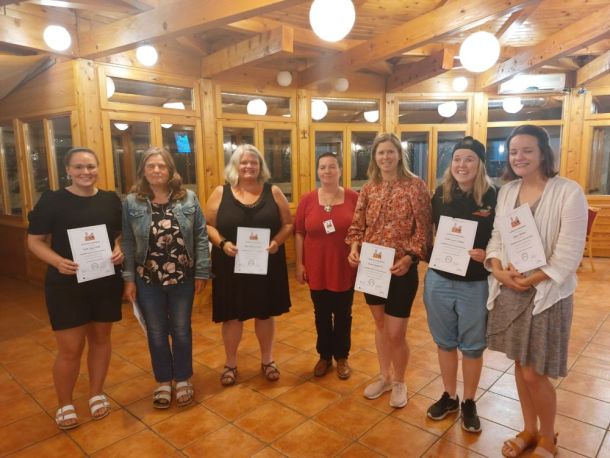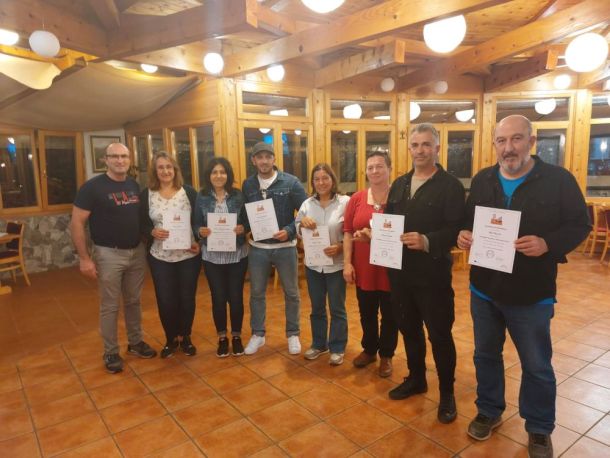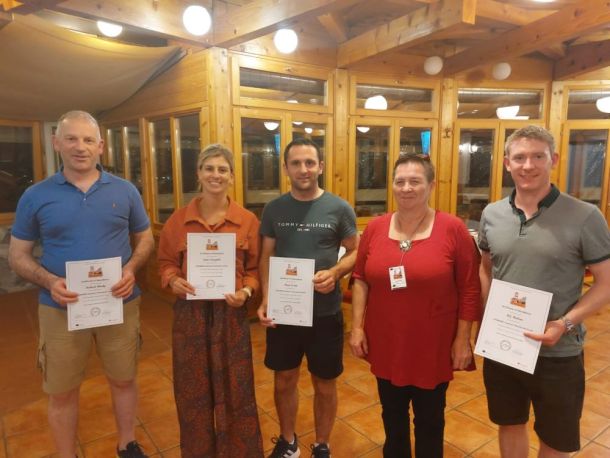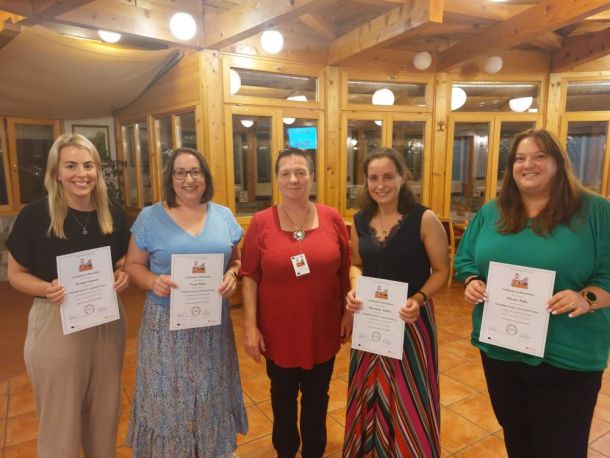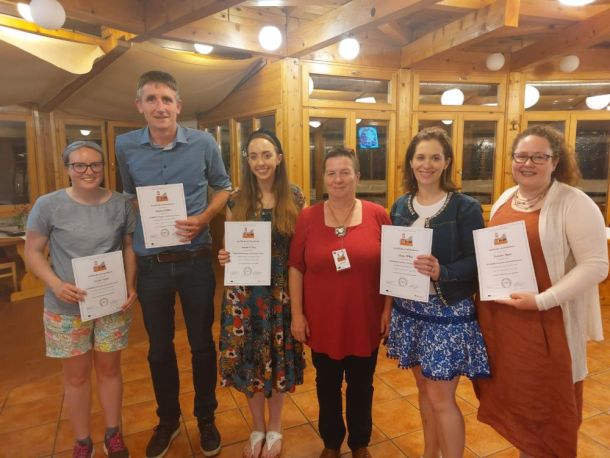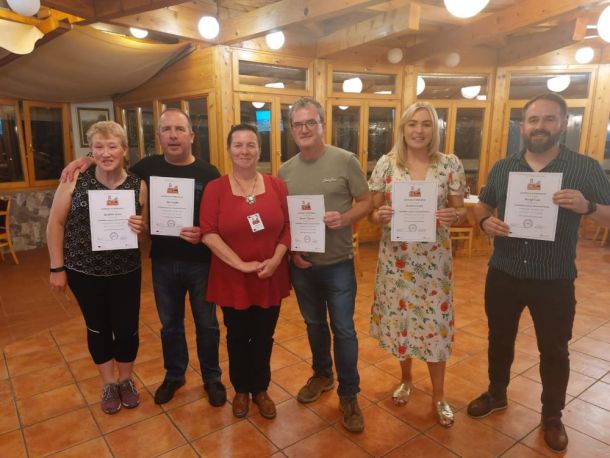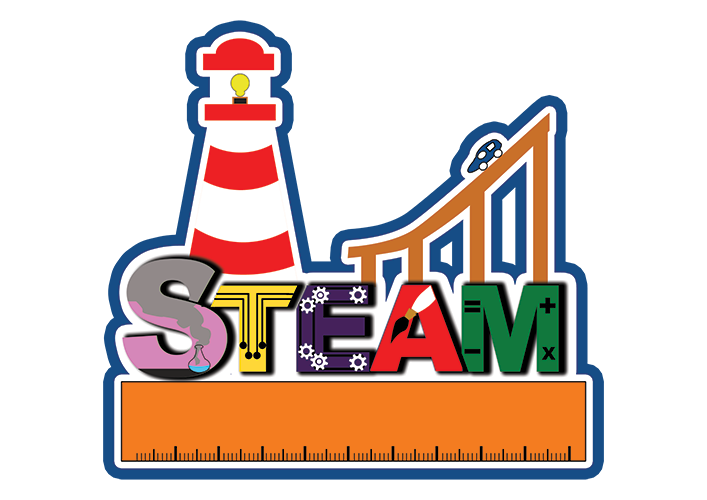Structured Training Course 1 in Croatia June 6th - 10th 2022
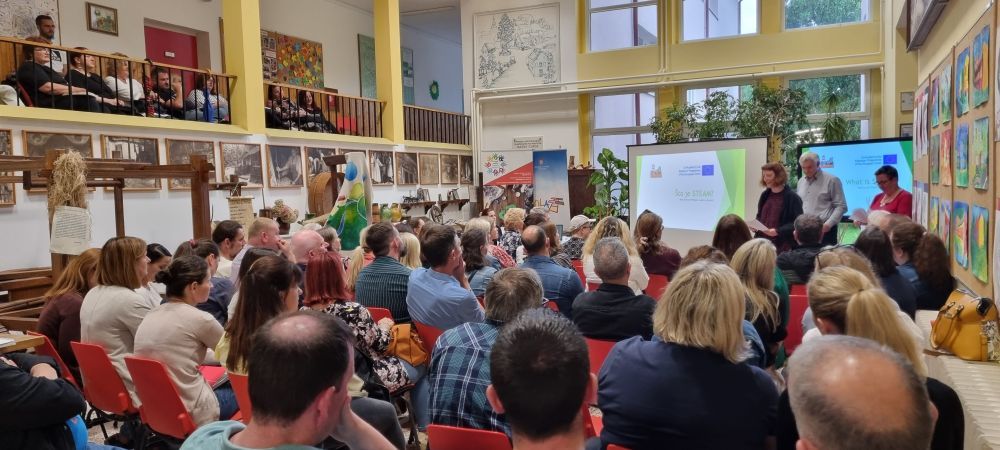
Course Presentations
Adding the Art: Moving from STEM to STEAM - Reflections on Workshop
These notes are based on the discussions following the 'Adding the Art: Moving from STEM to STEAM' presentation on June 8th 2022, in Croatia.
Difference between artistic and Science / Maths / Technology / Engineering related outlooks
The main thrust of the presentation concerned the position of Art(s) in STEAM education. From our reading of the current literature in this area, when incorporating art in the STEAM space, we need to consider Art from the outset of the activity.
McComas and Burgin (2020) provide a review of some of the philosophical and epistemological concerns around the concept of STEM education. One of the aspects they speak about is the nature of disciplines. Maths, Science, Technology and Engineering all have their own inherent structures and ways of thinking that are intrinsic to these areas. When we think of a STEM activity, we are identifying areas of overlap where we might facilitate integration between these disciplines.
With the traditional STEM PD model, the teacher builds towards an activity that might incorporate aspects from two or more of the subject areas. For example, the ski-lift and bridge building activities would have touched on a number of curricular areas.
When we look to add elements of the Arts to STEM to create STEAM, we need to consider the nature of the arts discipline we are hoping to include and to include this understanding from the outset of the project. An artist, of whatever hue, would approach an art project from a different place to an engineer for example. If we think of an architect, he or she will design a building from an aesthetic perspective, whereas an engineer has to consider how the building will stand up, how services are incorporated, how it can be built, etc.
If we are to include A in STEAM effectively, according to the literature, we need to provide opportunities for arts ways of thinking to be included from the outset of the project. To take our engineer / architect relationship, we would like to create an aesthetically pleasing bridge that can open and close effectively. Unlike the STEM lesson, where the opportunities for overlap are perhaps more evident, the overlap between Art and the STEM subjects might be less obvious. To that end, it would be important to canvas the ideas of teachers with a strong interest in the arts.
We also spoke extensively with Agnes, who outlined ways that art might serve as a way into a STEAM project. For example, she mentioned beginning with a sculpture lesson and creating an art object such as the rooster in Croatia (I think). Inspired by the lightning on the way back from the lakes, she mentioned that the sculpture could be further developed into a lightning rod and opening up into the world of electricity, etc. From her point of view, the key idea is that you use a piece of art to lead the integration.
Agnes also spoke a little of the difference between design, which might have limits, and art. Again, this leads to the difference between the engineer and the architect. The architect is somewhat unlimited, whereas the engineer must design solutions with very specific limits. How can we best facilitate both legs so to speak in a STEAM lesson? The aesthetic appearance of an STEAM creation, the integration of a musical piece, from whatever arts area it may emerge from, should be of as fundamental a concern as if the project ‘works’. Furthermore, opportunities to develop an understanding and appreciation of this aesthetic through STEAM should be developed and encouraged.
Although the phrase STEM with Stickers might seem a little simplistic, it does perhaps highlight clearly the challenge at hand. According to the literature, a STEAM lesson should include Art on a co-equal basis with at least one other subject area, from the outset of the project. The conversation with Agnes and the points raised by Eadaoin during the presentation Q&A were very helpful in this regard.
The STEM / STEAM PD methodology
MB went on to speak about the idea of a STEM / STEAM methodology, which might be extended to include other subject areas. This reflected some of the questions that were asked following the presentation and reflects some of issues around perceptions of STEM / STEAM.
We spoke a good deal about the idea of theory into practice, and how a teacher might take ownership of the STEM / STEAM approach in their classroom. Perhaps there is a perception that a STEAM lesson must include certain aspects to be a considered a STEAM lesson. We would suggest that rather than a focus on whether there is integration between several subject areas, it might be helpful to consider how effectively the methodology has been implemented. We might view the activity as a vehicle to encourage student engagement with certain skills. A better barometer of how successful a lesson was might be how well students engaged with these skills, rather than how many STEAM subjects were included.
We would suggest that there is no hierarchy between STEM or STEAM, or that a STEM lesson is in some way inferior to a STEAM lesson. This idea might have been reflected in some of the questions during the Q&A session following the presentation. A purely STEM focused activity, with no reference to Art, for example is just as relevant as a full STEAM lesson, provided the methodology is followed and the conditions for student engagement, problem solving, etc., are provided.
The methodology proposed by MB, and demonstrated during the various workshops, is possibly as important as the content covered. I think during the discussion, people mentioned how the approach has been successfully implemented in other non-STEAM subject areas. It is also not necessary to include all subjects areas in a STEM / STEAM lesson.
Discussion following presentation
- Perhaps the key discussion area here related to the place of A in a STEAM lesson. We would argue that it is central to the STEAM lesson and it needs to be prominent in the lesson from the beginning.
- However, much of this is down to the interpretation of the teacher and how they go about planning the lessons and there probably isn’t a wrong answer in how this is achieved.
- Some contributors spoke of extending the STEAM methodology, for example STEEAM = Science, Technology, Engineering, EVERYTHING, Arts and Mathematics. In the example given, History could be integrated by including the study of the operation of the Steam Pump and how its invention drove the Industrial Revolution.
- STEAM could be viewed as an effective teaching methodology (or approach) that can be applied to virtually all subjects. Expanding from STEM to STEAM provides more opportunities for teachers to appreciate and utilise its hands-on, investigative and collaborative approaches.
- Teachers have found that when Art is the central component of a STEAM lesson, other STEAM subjects can be easily and seamlessly integrated.
- It is important to remember that the ‘A’ in STEAM stands for ‘Arts’, not just Visual Art. Therefore, it includes Language Arts, Music as well as Visual Art.
- STEM is perceived by many as a government-driven education policy whose primary goal is to address a shortage of STEM-educated persons in the workforce. Inclusion of the ‘A’ through STEAM can be perceived more as an educator-driven model that provides the teacher with the freedom to integrate a substantially broader range of themes and ideas from the Arts subjects in the curriculum into their STEAM lessons.
- For some, STEAM is ‘STEM with stickers’ (but we should not be prescriptive in this in terms of how any subject, not just Art is included. Perhaps the focus should be on how these aspects could be integrated further).
- Exploration of STEAM by teachers is an ongoing process. Efforts at implementing STEAM should never be regarded as failures, as our current knowledge about STEAM means that teachers’ efforts can be viewed as part of a journey that involves cycles of trialing, adapting, inventing and learning. It is only by teachers reviewing and sharing their experiences that we will get closer to a more definitive understanding of how STEAM can best be utilized in the classroom.
- The addition of Arts greatly increases the scope for making STEAM a truly inclusive methodology.
- Teachers should not feel obliged to include all 5 components of the S.T.E.A.M. acronym into an individual STEAM lesson.
Cultural Activities
Participants engaged in a number of really interesting cultural activities. On the first night, each nationality attending the course organised a table for the International Market Place fearturing typical food and drink from their country. The marketplace was comlimented by displays of traditional song and dance. Participants visited the magnificent Plitive Lakes National Park and participated in workshops before touring the park. The week ended with a 'farewell dinner' where participants expressed their gratitude to their hosts.
The STEAMING project has been funded by the European Commission through the Erasmus + programme. The European Commission's support for the production of this publication does not constitute an endorsement of the contents, which reflect the views only of the authors, and the Commission cannot be held responsible for any use which may be made of the information contained therein.

